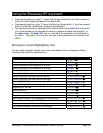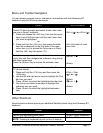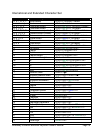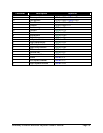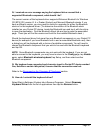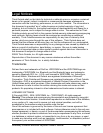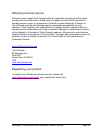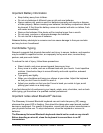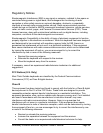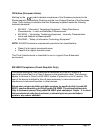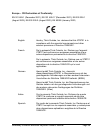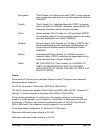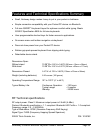
Stowaway Universal Bluetooth Keyboard Owner’s Manual Page 25
Regulatory Notices
Electromagnetic Interference (EMI) is any signal or emission, radiated In free space or
conducted along power or signal leads, that endangers the functioning of radio
navigation or other safety service or seriously degrades, obstructs, or repeatedly
interrupts a licensed radio communication service. Radio communications services
include but are not limited to AM/FM commercial broadcast, television, cellular services,
radar, air-traffic control, pager, and Personal Communication Services (PCS). These
licensed services, along with unintentional radiators such as digital devices, including
computers, contribute to the electromagnetic environment.
Electromagnetic Compatibility is the ability of items of electronic equipment to function
properly together in the electronic environment. While this keyboard has been designed
and determined to be compliant with regulatory agency limits for EMI, there is no
guarantee that interference will not occur in a particular installation. If this equipment
does cause interference with radio communications services, which can be determined
by turning the equipment off and on, you are encouraged to try to correct the
interference by one or more of the following measures:
• Reorient the receiving antenna.
• Relocate the keyboard with respect to the receiver.
• Move the keyboard away from the receiver.
If necessary, consult an experienced radio/television technician for additional
suggestions.
FCC Notices (U.S. Only)
Most Think Outside keyboards are classified by the Federal Communications
Commission (FCC) as Class B digital devices.
Class B
This equipment has been tested and found to comply with the limits for a Class B digital
device pursuant to Part 15 of the FCC Rules. These limits are designed to provide
reasonable protection against harmful interference in a residential installation. This
equipment generates, uses, and can radiate radio frequency energy and, if not installed
and used in accordance with the manufacturer’s instruction manual, may case
interference with radio communications. However, there is no guarantee that
interference will not occur in a particular installation. If this equipment does cause
harmful interference to radio or television reception, which can be determined by turning
the equipment off and on, you are encouraged to try to correct the interference by one
or more of the following measures:
• Reorient or relocate the receiving antenna.
• Increase the separation between the equipment and the receiver.
• Consult the dealer or an experienced radio/television technician for help.



